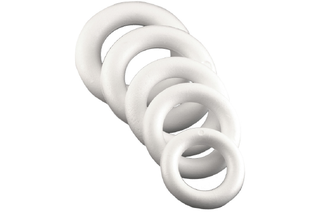
Styropor
Styropor ist der Markenname für Expandiertes Polystyrol (EPS) und seit Mitte der 60er Jahre im Einsatz. Polystyrol wird durch die Polymerisation von Styrol gewonnen. Expandierbares Polystyrol (EPS) erhält während der Polymerisation zu festen Kügelchen Gaseinschlüsse. Die Kügelchen werden zum Verarbeiter transportiert, dort unter Wasserdampf etwas über 100 °C erwärmt, expandiert das Gas und der thermoplastische Kunststoff bläht sich auf. Die Ränder der Blasen verschmelzen. Es entsteht ein geformter Festkörper, je nach Form ist alles von einfachen Platten bis geometrisch komplizierten Formteilen möglich.
Eckdaten Styropor
Techn. Bez.: Expandiertes Polystyrol (EPS)
Rohmaterial: Styrol
Rohdichte: ca. 20 kg/m3 (20 g/l)
Bastelanwendungen:
Serviettentechnik; diverse Stecktechniken; Decopatch; diverse Maltechniken; Beton gießen, bekleben, marmorieren






























